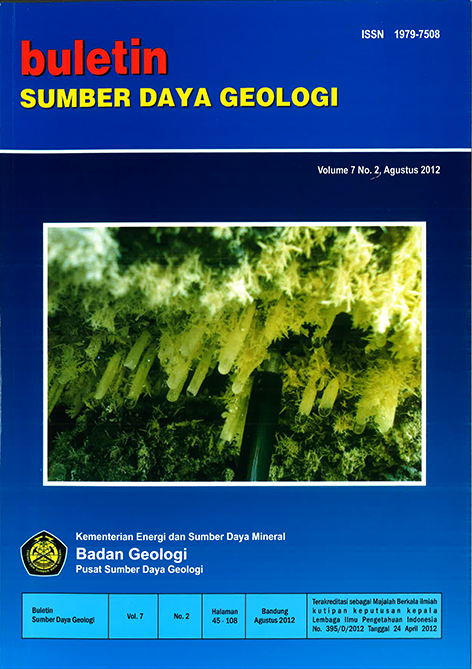Facies And Diagenesis Of Tabalar And Tendehantu Carbonate Formation In Mangkalihat Peninsula Area: An Outcrop Preliminary Study To Oligocene – Miocene Reservoir Candidate Prospect
Abstract
Mangkalihat peninsula is located between Kutai and Tarakan basins, which known as two Hydro Carbon (HC) Prolific basins in Eastern Borneo. The petroleoum system in this area is poorly known because of the different system between Kutai and Tarakan Basin. The field study is focusing in the eastern part of Mangkalihat Peninsula, where The Tabalar and Tendehantu Formation are exposed. The data compilation is from outcrop, thin section and plug sample which permeability and porosity values were measured by Klickenberg method. Outcrop analysis showed that Tendehantu Formation can be divided into two lithofacies, whileTabalar Formation has only one lithofacies. The petrographic thin section analysis showed three microfacies from the two formations. Pore destruction caused by diagenesis can de indicated with the presence of bladed and equant cement in vuggy pores, while the diagenetical development of porosity is marked by the microfracturing that was assumed to be formed by compaction and deep burial and matrix dissolution in some of the samples. Petrography and plug sample data integration shows the quality value of those carbonate rock as a reservoir from the permeability and porosity parameter. Based on the microfacies grouping showed in three microfacies, the porosity value is 5.26 - 17.32 % (tight to good), and permeability value is 0.041 – 7.27mD (fair – poor). The carbonate rock quality is influenced by the whole diagenetic processes that happened in each lithofacies.
Downloads
References
Mangkalihat peninsula is located between Kutai and Tarakan basins, which known as two Hydro Carbon (HC) Prolific basins in Eastern Borneo. The petroleoum system in this area is poorly known because of the different system between Kutai and Tarakan Basin. The field study is focusing in the eastern part of Mangkalihat Peninsula, where The Tabalar and Tendehantu Formation are exposed. The data compilation is from outcrop, thin section and plug sample which permeability and porosity values were measured by Klickenberg method. Outcrop analysis showed that Tendehantu Formation can be divided into two lithofacies, whileTabalar Formation has only one lithofacies. The petrographic thin section analysis showed three microfacies from the two formations. Pore destruction caused by diagenesis can de indicated with the presence of bladed and equant cement in vuggy pores, while the diagenetical development of porosity is marked by the microfracturing that was assumed to be formed by compaction and deep burial and matrix dissolution in some of the samples. Petrography and plug sample data integration shows the quality value of those carbonate rock as a reservoir from the permeability and porosity parameter. Based on the microfacies grouping showed in three microfacies, the porosity value is 5.26 - 17.32 % (tight to good), and permeability value is 0.041 – 7.27mD (fair – poor). The carbonate rock quality is influenced by the whole diagenetic processes that happened in each lithofacies.
Copyright (c) 2018 Buletin Sumber Daya Geologi

This work is licensed under a Creative Commons Attribution-NonCommercial-ShareAlike 4.0 International License.
Authors whose manuscripts are published agree to the following terms:
The publication rights of all journal manuscript materials published on the Buletin Sumber Daya Geologi website are held by the editorial board with the knowledge of the author (moral rights remain with the manuscript’s author).
The formal legal provisions for access to digital articles in this electronic journal are subject to the terms of the Creative Commons Attribution-ShareAlike (CC BY-SA) license. This means that Buletin Sumber Daya Geologi has the right to store, convert media/formats, manage in the form of a database, maintain, and publish the article without requesting permission from the author, as long as the author’s name is cited as the copyright holder.
Manuscripts published in both print and electronic formats are open access for educational, research, investigative, and library purposes. Beyond these purposes, the editorial board is not responsible for any violations of copyright law.















